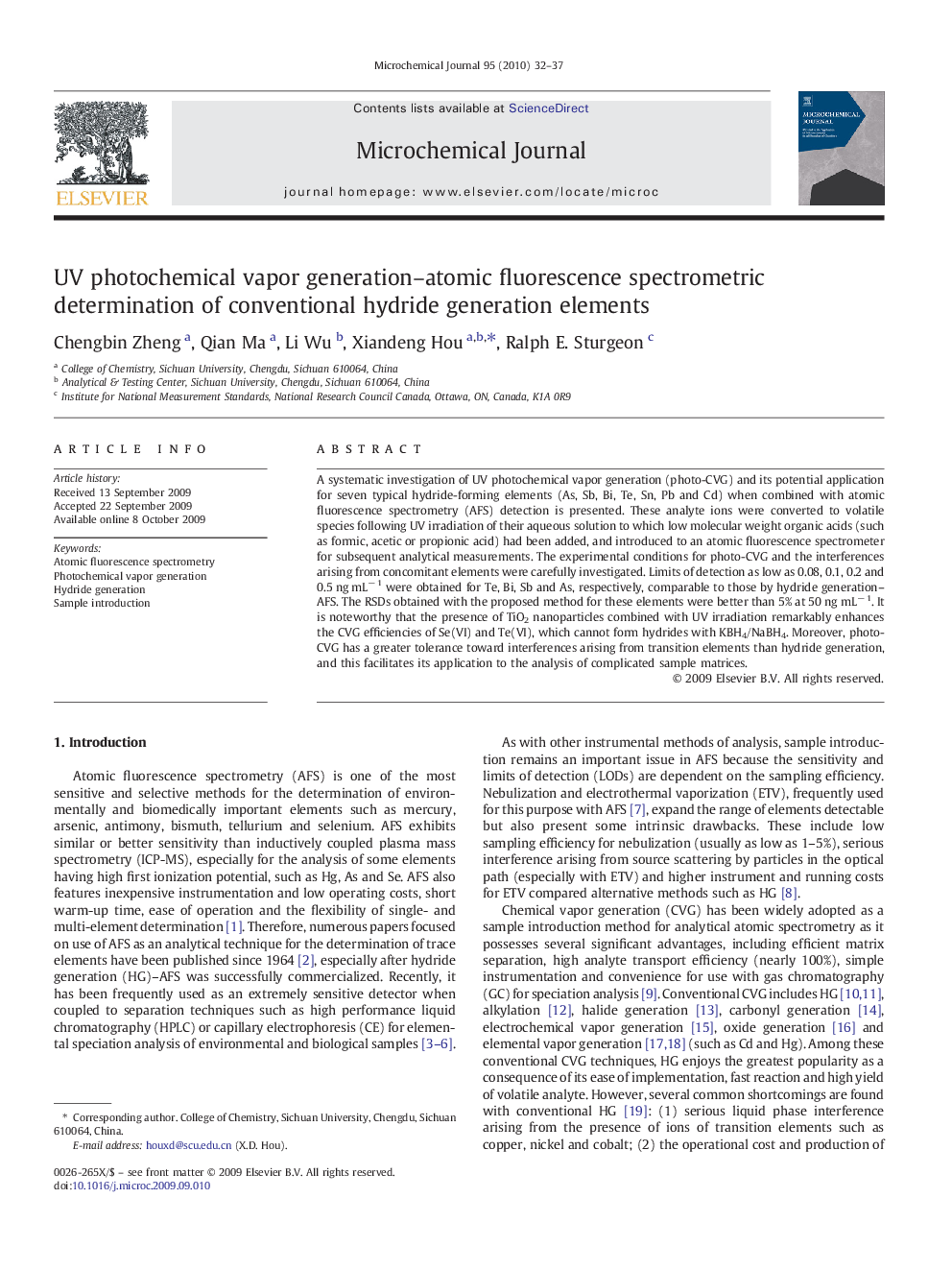| Article ID | Journal | Published Year | Pages | File Type |
|---|---|---|---|---|
| 1228100 | Microchemical Journal | 2010 | 6 Pages |
A systematic investigation of UV photochemical vapor generation (photo-CVG) and its potential application for seven typical hydride-forming elements (As, Sb, Bi, Te, Sn, Pb and Cd) when combined with atomic fluorescence spectrometry (AFS) detection is presented. These analyte ions were converted to volatile species following UV irradiation of their aqueous solution to which low molecular weight organic acids (such as formic, acetic or propionic acid) had been added, and introduced to an atomic fluorescence spectrometer for subsequent analytical measurements. The experimental conditions for photo-CVG and the interferences arising from concomitant elements were carefully investigated. Limits of detection as low as 0.08, 0.1, 0.2 and 0.5 ng mL− 1 were obtained for Te, Bi, Sb and As, respectively, comparable to those by hydride generation–AFS. The RSDs obtained with the proposed method for these elements were better than 5% at 50 ng mL− 1. It is noteworthy that the presence of TiO2 nanoparticles combined with UV irradiation remarkably enhances the CVG efficiencies of Se(VI) and Te(VI), which cannot form hydrides with KBH4/NaBH4. Moreover, photo-CVG has a greater tolerance toward interferences arising from transition elements than hydride generation, and this facilitates its application to the analysis of complicated sample matrices.
